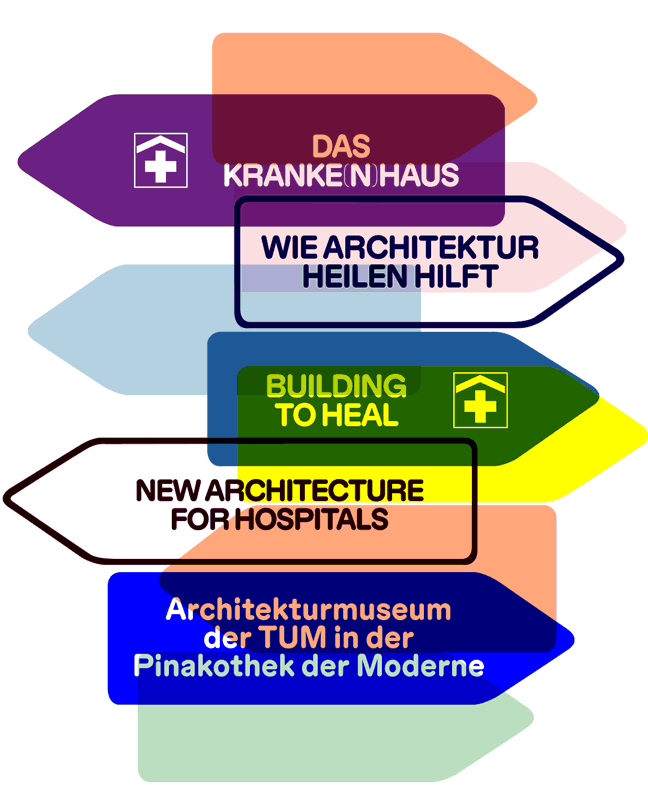EXHIBITION. BUILDING TO HEAL. NEW ARCHITECTURE FOR HOSPITALS

Graphic. strobo B M
Against the background of the major challenges in our aging society, the compact congress “Architecture for the Senses” as part of the conference series “New Developments in Healthcare Architecture” will shed light on the new complex tasks of all those
The exhibition at the TUM Museum of Architecture takes a critical look at the scientific foundations of “healing architecture,” particularly its effectiveness and feasibility. The exhibition was planned and developed by the curator team Vollmer, Lepik, Luksch. The presentation is both a status report of current efforts to move from the so-called “sick house” to a healthy environment and a bold view of a visionary future. The exhibit features 13 international hospital projects as well as the seven “healing agents” with which the projects were analyzed and characterized as evidence-based design. The architectural history of the hospital as a building type is long and complex and, in recent centuries, closely reflects rapid advances in medicine. In the 20th century, however, the construction of hospitals was increasingly influenced by factors of efficiency, economy, flexibility, and rationalization, and clinics mutated into highly technical machines as a result. The fundamental needs and sensibilities of patients and hospital staff were pushed to the wayside, and the psycho-social consequences of this development are severe. However, the rise of “healing architecture” in North America and its subsequent successful adaptation in Europe has provided added momentum to a reform of hospital architecture, with designers and planners once again placing human needs at the center of their projects. But although some successful examples of effective “healing architecture” have already been implemented, there is still a lack of broader public attention and political support for the introduction of new standards in healthcare architecture and for making such “evidence-based design” common building practice. What is required is a fundamental rethink of architecture’s role in institutional healthcare and the tasks and possibilities of hospital design.
